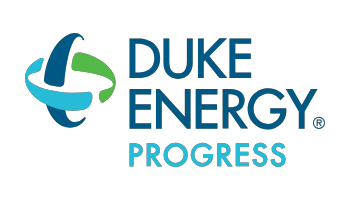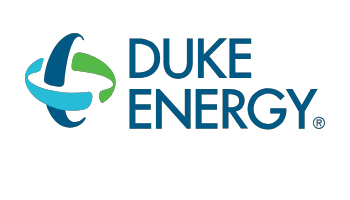Why choose lithium batteries? Lithium battery technology offers numerous advantages over lead acid batteries. In this piece, we’ll review those advantages while taking a look at various lithium battery chemistries to help you choose the best solution for your residence or business.
Lithium Batteries and Safety
The outdated technology and harmful gas emissions of lead acid batteries make lithium the safer choice. But the temperature sensitivity of cobalt leads to an increased risk of a unit catching fire.
Among lithium batteries, lithium iron phosphate is the safest choice thanks to its substantially increased temperature tolerance compared to lithium ion.
Depth of Discharge Levels of Lithium Batteries
A little-known fact about lead acid batteries? Their optimal depth of discharge is only 50 percent of their usable capacity. So a 10-kWh battery is only best for five hours.
Regardless of battery chemistry, lithium batteries can be fully discharged. However, doing so repeatedly will shorten the battery’s longevity and lifespan. Therefore, the recommendation is to settle for 80 percent depth of discharge. This approach will allow the battery to last for 8,000 life cycles.
Grid Autonomy
Depending on the community where you live or work, battery needs may differ. For example, living in the city or suburbs means most power outages last anywhere from minutes to a few hours. Some instances are more extreme, but in the majority of cases you can rest assured power will be restored promptly.
But in rural communities, outages can last for days or even weeks after particularly strong storms. A larger battery bank may be a necessity in these communities to provide lasting independence from a non-functioning or compromised power grid.
Are Lithium Batteries Safe Inside a Home?
Storing your batteries indoors is always preferable. Keeping the battery at or close to room temperature is the best possible scenario for protecting the battery’s longevity and lifespan.
However, due to fire codes and various regulations, indoor storage isn’t always possible. Fortunately, modern technology allows for safe outdoor storage of lithium batteries. This does lead to a separate consideration in the form of IP (Ingress Progress) ratings. In a nutshell, this rating indicates the level of protection your battery receives from foreign objects both solid and liquid.
A battery enclosure with a rating of IP65 or above is sufficient to protect the batteries from the elements in almost all outdoor environments. A mechanism that can protect, heat, or cool the battery is equally important.
Pricing of Lithium Batteries
Of course, there are still some instances where lead acid batteries are beneficial. For example, if you’re facing budget constraints and worried about just an occasional power outage here and there – lead acid batteries are still the way to go.
Jing Yu, CEO of Fortress Power, says that it’s when you’re looking for occasional battery cycles – maybe a couple a week, or as many as one per day – that questions of cost become involved.
“Lead acid may be cheaper up front,” said Jing. “But in the long term, it’ll actually be more expensive.”
Why? It’s all explained in depth here, but the short answer is this is where aforementioned factors such as depth of discharge and battery cycle life become factors. If a battery that costs twice as much can guarantee you 8,000 life cycles, it’s a better economic choice than the less expensive batteries offering only 500 or 1,500 life cycles.
“This is why lithium is the trend,” Jing added.
The Future of Lithium Batteries
And that trend figures to not only continue but grow over the next several decades. Just recently, California announced its intent to end the sale of new, gas-powered vehicles by the year 2035, and more states are likely to follow in their footsteps.
Of course, with more electric vehicles comes greater reliance – and greater stress – on the power grid.
“Household power consumption is increasing and will continue to go up due to the adaptation to electric vehicles,” said Jing. “If each household has one electric vehicle, power consumption increases by 50 percent. With two electric vehicles, now you’re doubling your power consumption.
“So what happens? Everybody comes home at night, and they want to charge their cars. The power grid won’t be able to handle this.”
The likelihood is that each family, or each neighborhood, will have a designated time window for charging their vehicles each day or each night – maybe 4 p.m. to 8 p.m. As you can imagine, this won’t be cheap.
With added solar storage comes added independence from the grid, freedom from strict time constraints for charging electric vehicles, and best of all, freedom from exorbitant energy costs.
Why Choose Lithium Iron Phosphate (LiFEPO4) Batteries?
Lithium batteries are maintenance free and provide six times the number of life cycles as a lead acid battery. Installation is easier and more cost-effective thanks to the compact battery size.
In the short term, lithium batteries come with higher up-front costs, but in the long-term consumers realize savings in battery life, the removal of maintenance concerns, plus the added benefits of doing your part for the environment and the peace of mind of a safer alternative to lead acid.
But which lithium battery? Jing says the lithium iron phosphate (LiFEPO4) chemistry furthers each of the above advantages.
“You want the safest options for you and your loved ones in your home,” she said. “Plus, lithium iron phosphate lasts twice as long as lithium-ion batteries that are used in Tesla and LG Chem.
“You need safety, reliability, and durability. Lithium iron phosphate is going to offer you the best in all these categories.”
LiFEPO4 batteries are highly tolerant to overcharge and discharge when compared to lithium-ion batteries.
The increasing popularity and adoption of solar encourages tangible advances within this industry. In terms of battery chemistry, LiFEPO4 is the optimal choice for residential solar power storage.




















